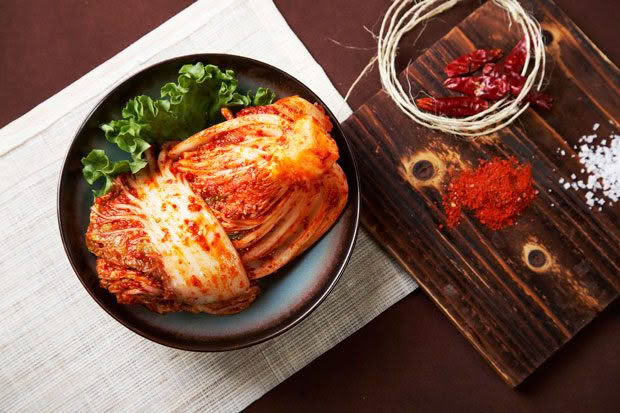Recipe: How to make kimchi

This Korean fermented cabbage dish has many health benefits.
Words: Jenny Garing
It seems that restaurant menus everywhere are including some sauerkraut or kimchi in their dishes. Both are variations on fermented cabbage and are considered to be one of the healthiest foods in the world.
Extensive research indicates they contribute to colon health, lower cholesterol, better thinking, a stronger immune system, healthy skin, and weight loss. Additional research also shows kimchi has anti-oxidative, anti-ageing, and immune-supporting properties.
Kimchi is more of an acquired taste than the other fermented vegetable dishes in this story, but it’s easy to make and quite addictive once you start eating it.
You can vary the amount of chilli, garlic and ginger to sit your family’s taste. I usually cut my Chinese cabbage into pieces before salting them overnight and then draining them to make the kimchi. It always works well. But you can also leave the cabbage whole, as many Koreans do.
Once you have made the kimchi it can be eaten as a side dish, as is. Alternatively, to encourage the family to eat this healthiest of foods, you can use kimchi as an ingredient in other dishes, for example as a filling in homemade sushi, or add a little to burgers or wraps for a spicy pickle kick.
INGREDIENTS
4 Chinese cabbages (bases trimmed)
1 daikon radish, peeled and cut into
matchsticks
2 carrots, peeled and cut into
matchsticks
4 spring onions, ends trimmed, cut into
2cm pieces (use all parts)
¾ cup Korean red pepper powder (gochugaru)
¼ cup fish sauce
¼ cup peeled and minced fresh ginger
1 tbsp minced garlic cloves
(6-8 medium cloves)
1½ tsp sugar
1 tsp salt
METHOD
Put your cabbages in water with about ½ cup of salt for 24 hours or at least 1 night, then drain and squeeze out all the liquid. Let them drain for another 24 hours. This length-of-sitting draining is very important as the process breaks down the cells of the cabbage leaves, making them limp and shrunken in size, and kills off bad bacteria.
Put together the rest of the ingredients and when well mixed, massage the mixture into the cabbage leaves. You may want to use gloves to do this if you use a lot of chilli. If you have left the cabbage whole, you’ll need to pull the outer leaves away a little so that you can start massaging the chilli and vegetable mixture onto the leaves from the inside to the outer.
Place into a large plastic container and leave at room temperature for 3-4 days to ferment. Keep refrigerated. As it ages it becomes slightly sourer but it’s still tasty.
Recipe: Kimchi Pancakes

Kids love these savoury pancakes.
INGREDIENTS
1 cup chopped kimchi
3 tbsp kimchi juice
2 tbsp chopped spring onion
½ tsp salt
½ cup flour
¼ cup of water
Oil
METHOD
Put all the ingredients in a bowl and mix well. Heat up a non-stick frying pan over medium high heat and add about 2 tbsp of oil. Pour the pancake batter into the pan and spread it out evenly with a spoon.
Cook it for 1-1½ minutes until the bottom gets golden brown and crispy. Turn it over with a spatula, lower the heat to medium and cook for another 1½ minutes. Turn it over one more time and cook for 30 seconds before transferring it to a serving plate.
Cut into bite-sized pieces to serve with this dipping sauce.
DIPPING SAUCE
INGREDIENTS
1 tbsp rice vinegar
1 tbsp soy sauce
1 tsp sesame oil
½ tsp Korean chilli pepper flakes (optional)
1 tsp toasted sesame seeds (optional)
METHOD
Whisk everything together thoroughly.
Love this story? Subscribe now!
 This article first appeared in NZ Life & Leisure Magazine.
This article first appeared in NZ Life & Leisure Magazine.
